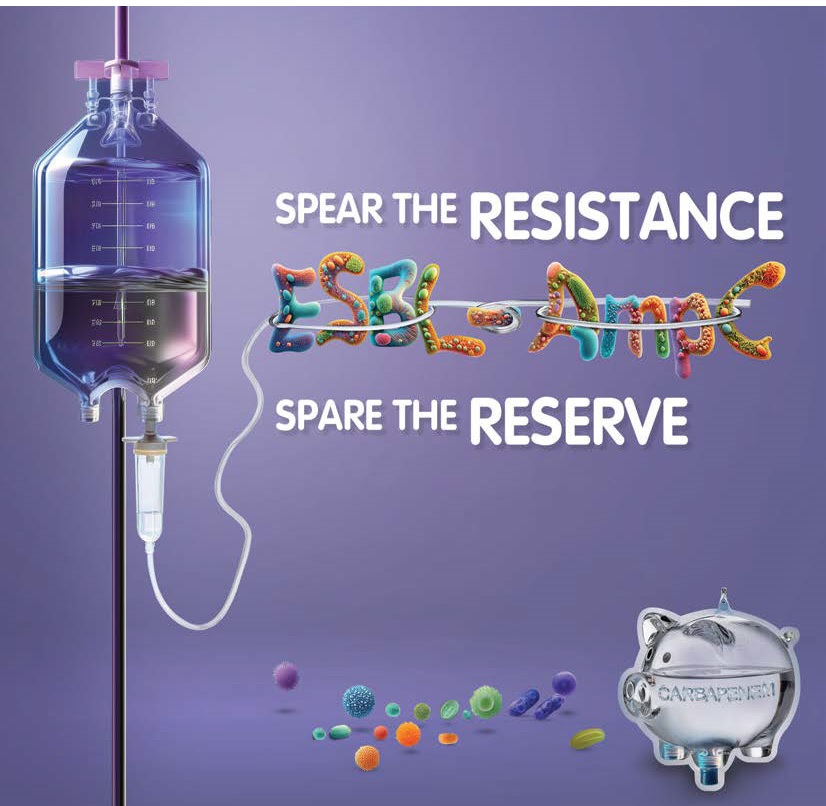How can we link diagnostic and antibiotic stewardship?
Speaker: Dr. Constantinos Tsioutis
Key Highlights
What is Diagnostic Stewardship(DS) and Antibiotic/Antimicrobial Stewardship (AMS)?
-
Diagnostic Stewardship is the process of choosing and applying the right test at the right time in order to ensure the accurate and timely diagnosis of a patient which will further lead to prompting the correct action leading to optimal patient outcomes.
-
Antibiotic Stewardship is the process of selecting and administering the most appropriate and optimal antibiotic treatment in the correct manner to improve clinical outcomes.
What are the common factors to be considered when DS and AMS are being linked?
-
Both the above approaches aim to center care around patients by using timely diagnosis and appropriate treatment in order to optimize outcomes.
-
The main component of DS consists of clinical decision making, lab testing processes followed by the interpretation and reporting.
-
The system of AMS depends on planning the policies and interventions, implementing them and evaluating the outcomes.
-
In order to link both DS and AMS needs efficient integration at every phase with the results of DS directly going to AMS in order to make better treatment decisions.
-
Accurate and reliable diagnosis can lead to a more targeted antimicrobial use.
-
DS plays a role in monitoring antimicrobial resistance which in turn leads to prompting AMS activities.
-
When DS is used effectively it leads to reduced overuse or inappropriate use of antibiotics.
-
Both the programmes depend heavily on the infrastructure of the laboratory with accurate testing, quality control and result interpretation being the main components, a well-supported lab is critical for delivering actionable data to clinicians and AMS teams.
Barriers to implementation?
-
Clinical Resistance- Clinicians might have resistance in implementing these approaches since they perceive it to disrupt workflow and there might be testing restrictions involved.
-
Statistical Complexity- Certain concepts like pretest probability and likelihood ratios can be misunderstood.
-
Technology Limitations- Implementation of the cycle demands strong digital infrastructure which depends on institutional resources.
-
Metric Ambiguity- There can be multiple factors involved therefore it is challenging to directly measure interventions with patient outcomes.
DS and AMS in the patient pathway?
When integrated together; DS helps to support the initial clinical decisions and diagnostics followed by which AMS is activated and guides the treatment choices. When both work in synergy they support a continuous loop of informed care and feedback. Two examples where the implementation of the DS and AMS ecosystem might lead to better outcomes is healthcare associated UTI and bloodstream interventions. It is important to have clear guidelines and clinical decision support systems in order to avoid overtreatment.
Outcome Measures?
The outcome measures are divided into four categories
-
Diagnostic metrics- The compliance of testing protocols and the test positivity rates are measured.
-
AMS metrics- The use rate of antibiotics and adherence to guidelines, both are taken into consideration.
-
Clinical Outcomes-Factors like mortality, readmissions and length of stay are considered.
-
Patient-reported outcomes (PROs)- Patient satisfaction, perceived quality, symptom relief which is an emerging area for stewardship evaluation are all measured.
Conclusion:
DS and AMS must not operate in isolation. If they are aligned and integrated in patient-clinician interaction which is backed by a strong laboratory infrastructure it will prove to be critical for advancing infection control, combating antimicrobial resistance (AMR), and improving overall clinical outcomes for patients.
ESCMID Global, 11–15 April 2025, Vienna




